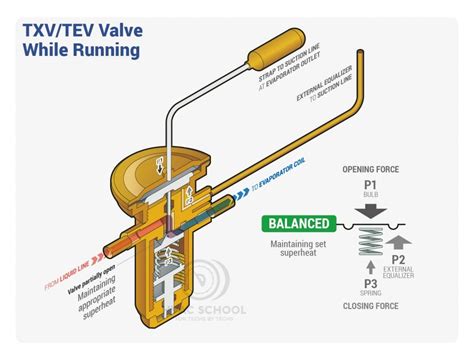How To Diagnose A Bad Txv
Ronan Farrow
Mar 24, 2025 · 3 min read

Table of Contents
How to Diagnose a Bad TXV (Thermostatic Expansion Valve)
A malfunctioning TXV (Thermostatic Expansion Valve) can significantly impact your air conditioning or refrigeration system's efficiency and performance. Diagnosing a bad TXV requires careful observation and understanding of its function. This guide will walk you through the common symptoms and troubleshooting steps to help you determine if your TXV needs replacing.
Understanding the TXV's Role
Before diving into diagnostics, let's briefly review the TXV's purpose. The TXV is a metering device that regulates the flow of refrigerant into the evaporator. It maintains the correct superheat level, ensuring optimal cooling and preventing issues like frosting or excessive refrigerant flow. A malfunctioning TXV can disrupt this crucial balance.
Common Symptoms of a Bad TXV
Several indicators point towards a problematic TXV. Keep an eye out for these:
Performance Issues:
- Insufficient Cooling: This is often the first and most noticeable sign. If your system isn't cooling as effectively as it should, a faulty TXV could be the culprit.
- Uneven Cooling: Noticeable temperature differences between different zones or vents suggest a problem with refrigerant distribution, a potential symptom of a malfunctioning TXV.
- System Cycling Too Frequently: A bad TXV might cause the system to short cycle (turn on and off repeatedly), leading to inefficient operation and potential wear and tear on the compressor.
Physical Signs:
- Frosting on the Suction Line: Excessive frost on the suction line (the line carrying refrigerant from the evaporator to the compressor) indicates that the TXV isn't metering the refrigerant properly, leading to excessive liquid refrigerant reaching the compressor. This is a serious problem and could damage your compressor.
- Overheating Compressor: A TXV malfunction can cause the compressor to overheat due to liquid slugging (liquid refrigerant entering the compressor). Listen carefully for unusual noises or excessive heat emanating from the compressor.
- Unusual Noises: Unusual noises coming from the TXV itself (clicking, hissing, or rattling) can be a sign of internal mechanical failure.
Troubleshooting Steps:
While diagnosing a TXV issue requires some technical knowledge, here are some basic steps you can take:
1. Check Refrigerant Levels:
Before suspecting the TXV, ensure your system has the correct amount of refrigerant. Low refrigerant levels can mimic some symptoms of a bad TXV. Note: Refrigerant handling requires specialized knowledge and equipment. If you're not familiar with refrigerant handling, it's best to call a qualified technician.
2. Inspect for Obstructions:
Check the lines leading to and from the TXV for any blockages or restrictions that could impede refrigerant flow. Look for debris or kinks that might affect the valve's operation.
3. Measure Superheat:
This requires specialized tools and knowledge. Superheat is the temperature difference between the refrigerant leaving the evaporator and the saturation temperature at the evaporator pressure. Incorrect superheat readings usually indicate a TXV problem.
4. Check for External Damage:
Carefully inspect the TXV for any physical damage, such as dents, cracks, or leaks.
When to Call a Professional:
If you've observed any of the symptoms mentioned above and lack the expertise to troubleshoot the issue, it's crucial to contact a qualified HVAC technician. Attempting repairs without the necessary knowledge and tools could potentially damage your system further and create safety hazards.
Remember: Diagnosing and repairing a TXV requires specialized tools and knowledge. Prioritize safety and consult with a qualified professional for accurate diagnosis and repair.
Featured Posts
Also read the following articles
| Article Title | Date |
|---|---|
| How To Hunt Beaver | Mar 24, 2025 |
| How To Clean Boat Carpet Mold | Mar 24, 2025 |
| How To Do Navratri Puja At Home | Mar 24, 2025 |
| How To Find Studs In Stucco | Mar 24, 2025 |
| How To Get Stains Out Of Vintage Linens | Mar 24, 2025 |
Latest Posts
-
How Did Phyllis Hoffman Depiano Passed Away
Apr 04, 2025
-
How Did Mickey Grossman Die
Apr 04, 2025
-
How Did Martin Luther King Show Courage
Apr 04, 2025
-
How Did Lysa Terkeurst Lose Weight
Apr 04, 2025
-
How Did Kent Cox Die
Apr 04, 2025
Thank you for visiting our website which covers about How To Diagnose A Bad Txv . We hope the information provided has been useful to you. Feel free to contact us if you have any questions or need further assistance. See you next time and don't miss to bookmark.
